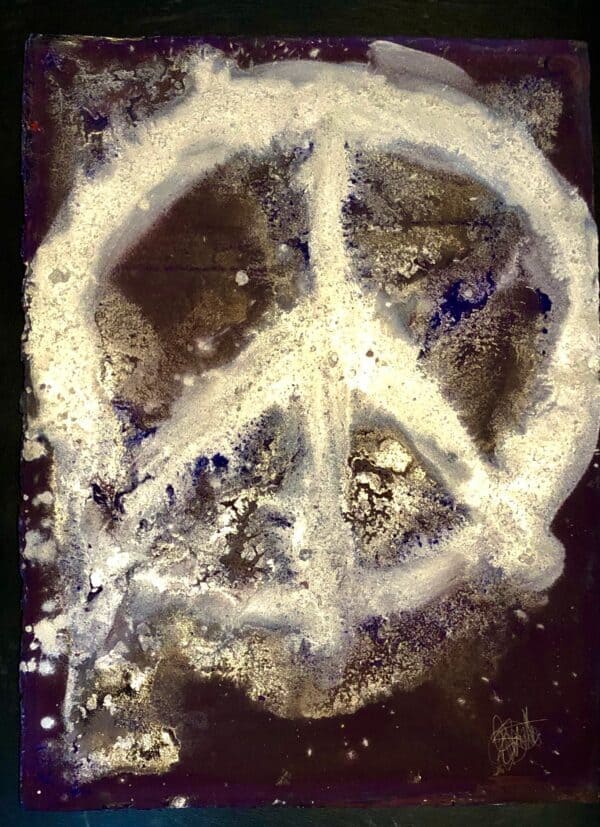Artist Q&A with Lin Evola

Why did you become an artist?
I learned to walk and talk at the same time that I began to draw, and I continued to make art as I grew up. At 10 years old my mother took a group of us children to The Art Institute of Chicago. I remember very distinctly how I felt when I looked up and witnessed huge paintings by Jackson Pollock and Robert Motherwell – which became known as Abstract Expressionism – hanging on all the walls around us. I felt like my skin was turned inside out. I knew who I was.
How is your work different than everything else out there?
Every artist discovers their own visual language that is based on how we see, how we hold our tools, and what tools we choose to make art. My art is produced partially or completely from metal from weapons. I use a lot of reflective surfaces to engage the viewer in reaching a conceptual interaction with the art itself.

What’s different about your current body of work?
Visually my art adds information and layers of meanings, staying tight to the basic empowerment for humanity to build peace. Implementing physics, numbers, and writing, I use a tempo bringing the viewer from a microcosm to a macrocosm in vision. Are you looking at a microscopic image? Is it pulsating? Are you looking at outer space? The layouts of the Peace Signs take about a month. I mix my own paints from pigment, and often include the weapons metal in the ink.
What’s coming up for you?
The Peace Angels Project is working on the 12 Peace Angels to be placed throughout Los Angeles. Culturally distinct, they are produced from decommissioned nuclear stainless steel, as well as indigenous weapons from source countries, and from that neighborhood with which the Peace Angel represents.
We are also working on the first 64 foot monument, created from 1 million weapons slated for downtown Los Angeles. The Los Angeles Peace Angel monument is connected to the 12 Peace Angels throughout Los Angeles and 1 in Washington, DC.
I have several art dealers – including Robert Curcio – who are looking for venues to offer art from the many years of drawing, painting, and sculpture that capture the essence of the struggle and grace of humanity moving from War to Conflict to Peace to Build and to Create. The Five Movements of Man are captured on drawings and on Sputtered Pieces that are produced from the most dangerous weapons on earth: decommissioned nuclear titanium.
What advice would you give to an artist just starting out today?
Stay true to yourself, follow your instincts, and keep making art.

When is a piece finished for you?
When it tells me. Art is engagement using materials on a surface. When the art is complete, it is present.
What are the influences and inspirations in your new works?
Humanity. I am interested in seeing the species of the Human Race move from conflict to cooperation. I am interested in witnessing the solid center of peace and protection.
Tell us about a few of your career highlights or moments that greatly affected your career?
When the Renaissance Peace Angel was installed in the permanent collection of The National September 11 Memorial & Museum, it became the first of the Peace Angels to be permanently installed in a museum of relevance that stands for making a space of beauty and empowerment on a base of violence.
I created the Peace Angels Project November 3, 1992. It took two years to write what would become known as the Peace Angels Project. The mission of the Peace Angels Project is to produce monuments created from active contemporary weapons on sites on earth that have experienced violence and transform the energy to a site of peace.

To learn more about Evola and her work, please visit www.peaceangels.com.

